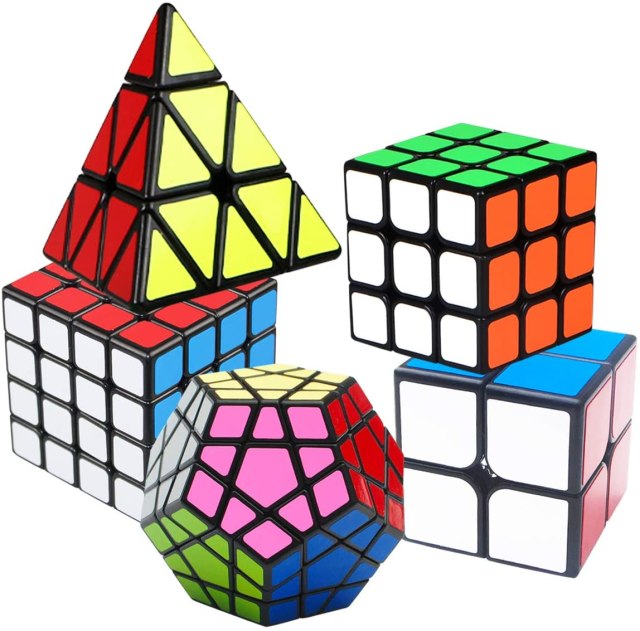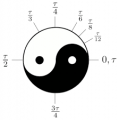Math is full of abstractions. Group theory is the pulling out of certain useful structures (or relations) from sets (or groups) of objects. These sets of objects can be composed of anything you could think of, such as rabbits, solar systems, colors, etc. Once we have a particular set in mind, we can identify or define certain relationships between these objects. The most common example in math is the set of integer numbers, N = {…-3, -2, -1, 0, 1, 2, 3…}. In this set the objects are all the negative numbers, positive numbers and 0. The integers do not include fractions. Then one common relationship between the integers is the operation of addition. For a set to qualify as a mathematical group, its objects and relation have to satisfy certain requirements:
Definition: a group G consists of a set of objects and a binary operator, *, on those objects satisfying the following four conditions:
- Closed: The operation * is closed, so for any group elements h and g in G, h ∗ g is also in G.
- Associative: The operation * is associative, so for any elements f, g, and h, (f ∗ g) ∗ h = f ∗ (g ∗ h).
- Identity element: There is an identity element e ∈ G such that e ∗ g = g ∗ e = g.
- Identity element: Every element in G has an inverse g^-1 relative to the operation * such that g ∗ g^-1 = g^-1 ∗ g = e.
Below are some basic theorems of all groups that follow from the definition of a group. Think through them yourself.
- The identity element, e, is unique.
- If a ∗ b = e, then a = b^-1
- If a ∗ x = b ∗ x, then a = b
- The inverse of (ab) is (b^-1)(a^−1)
- (a^−1)^−1 = e
Examples of Groups
- The integers form a group under addition. The identity element is 0, and the inverse of any integer k is its negative, -k.
- The nonzero rational numbers form a group under multiplication. The identity element is 1, and the inverse of any x is 1/x .
Abstracting the Rubik’s Cube
We can conveniently represent cube permutations as group elements. Or in other words, every group element will be a unique mixing up of the cube. We will call the group of permutations R, for Rubik (not to be confused with the symbol for real numbers).
Our binary operator, *, will be a concatenation of sequences of cube moves, or rotations of a face of the cube.
- Closed: Any face rotation still leaves us with a permutation of the cube, which is in R.
- Associative: It does not matter how the rotations are grouped, as long as the order in which operations are performed is conserved. f*(g*h) = (f*g)*h
- Identity Element: The identity element e corresponds with not rotating the cube at all.
- Inverse Element: The inverse of a rotation, is doing the opposite rotation to revert the cube to its original position. Let g be the cube move that rotates the front face clockwise. Then g^-1 moves the front face counterclockwise. Suppose there is a generic sequence of moves, g*f, then the inverse is f*g. From the above properties we know that if g and h are two elements of a group, then (h*g)^−1 = g^−1*h^−1 . Notice how the order of the rotations g and h switches when we take the inverse. Why is this? Think of putting on your shoes. To put them on, you put on your socks first, then your shoes. But to take them off you must first take your shoes off, and then take your socks off, or at least that is how I have always done it. Is there a possible counterexample?
Therefore we have abstracted the physical structure of a Rubik’s cube into the mathematical group R. In a future post, we will use our group R to help think through some possible solutions to the cube without straining our fingers by manipulating a cube in real life.
Can you think of any other concrete objects which could be abstracted and analyzed with a mathematical group?


